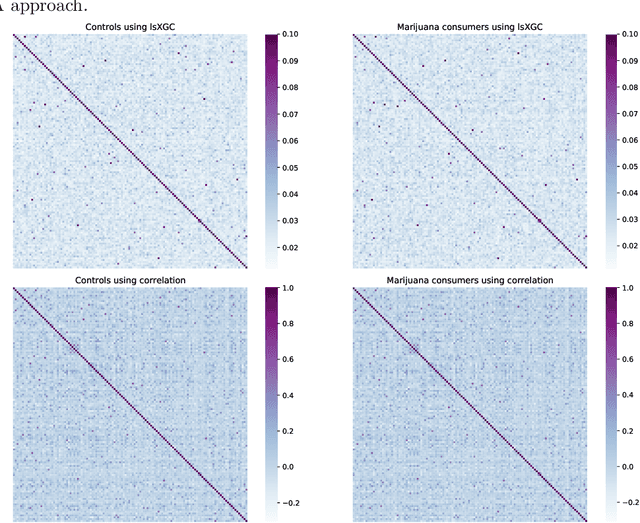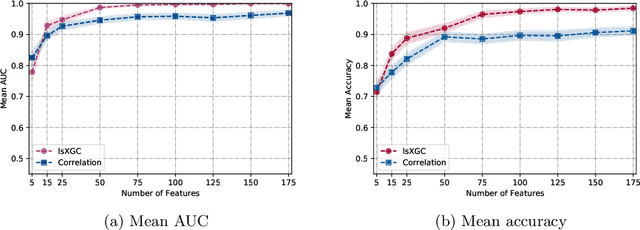Large-Scale Extended Granger Causality for Classification of Marijuana Users From Functional MRI
Paper and Code
Jan 06, 2021

It has been shown in the literature that marijuana use is associated with changes in brain network connectivity. We propose large-scale Extended Granger Causality (lsXGC) and investigate whether it can capture such changes using resting-state fMRI. This method combines dimension reduction with source time-series augmentation and uses predictive time-series modeling for estimating directed causal relationships among fMRI time-series. It is a multivariate approach, since it is capable of identifying the interdependence of time-series in the presence of all other time-series of the underlying dynamic system. Here, we investigate whether this model can serve as a biomarker for classifying marijuana users from typical controls using 126 adult subjects with a childhood diagnosis of ADHD from the Addiction Connectome Preprocessed Initiative (ACPI) database. We use brain connections estimated by lsXGC as features for classification. After feature extraction, we perform feature selection by Kendall's-tau rank correlation coefficient followed by classification using a support vector machine. As a reference method, we compare our results with cross-correlation, which is typically used in the literature as a standard measure of functional connectivity. Within a cross-validation scheme of 100 different training/test (90%/10%) data splits, we obtain a mean accuracy range of [0.714, 0.985] and a mean Area Under the receiver operating characteristic Curve (AUC) range of [0.779, 0.999] across all tested numbers of features for lsXGC, which is significantly better than results obtained with cross-correlation, namely mean accuracy of [0.728, 0.912] and mean AUC of [0.825, 0.969]. Our results suggest the applicability of lsXGC as a potential biomarker for marijuana use.
 Add to Chrome
Add to Chrome Add to Firefox
Add to Firefox Add to Edge
Add to Edge